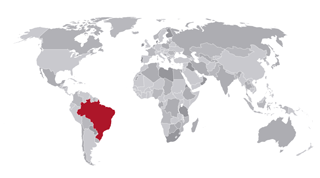Tax Effort and Tax Potential of State Governments in Mexico: A Representative Tax System
Abstract
Over the last two decades, Mexico has modified its intergovernmental fiscal structure from a very centralized system to a distorted scenario where state governments have gained substantial expenditure functions and most of the taxation responsibilities have remained in the federal government. It is argued that to move towards a more fiscally responsible scenario, some decentralization on the taxation side is needed. In this context, by constructing a representative tax system (RTS), this paper evaluates tax effort and tax potential in Mexico. The results are a useful input for policy decision making, not only in the event of future tax decentralization attempts but also in designing a new transfer scheme. The results are also the first RTS constructed for the Mexican case, and show that regional data in Mexico is gradually improving. Also, while the results shed some light as to which taxes could potentially be decentralized, the article warns about the fact that regional disparities in the country may well be a limitation on the extent to which taxes can be decentralized.
Resumen
Durante las últimas dos décadas México ha transformado su estructura fiscal intergubernamental, pasando de un sistema muy centralizado a un escenario distorsionado en el que los gobiernos estaduales han adquirido importantes funciones de gasto y la mayoría de las responsabilidades de imposición permanecieron en el gobierno federal. Se sostiene que para moverse hacia un escenario fiscalmente más responsable se necesita alguna descentralización del lado de la imposición. En este contexto, este trabajo evalúa, a través de la construcción de un sistema impositivo representativo (SIR), el esfuerzo impositivo y el potencial impositivo en México. Los resultados son un insumo útil para la decisión de políticas, no sólo para posibles intentos futuros de descentralización de la imposición sino también para diseñar un nuevo esquema de transferencias. Los resultados constituyen también el primer SIR construido para el caso mexicano y muestran que en México los datos regionales están mejorando gradualmente. Asimismo, si bien los resultados arrojan alguna luz acerca de cuáles impuestos podrían descentralizarse, el artículo advierte que las disparidades regionales en el país pueden bien pueden limitar la medida en que los impuestos puedan descentralizarse.






